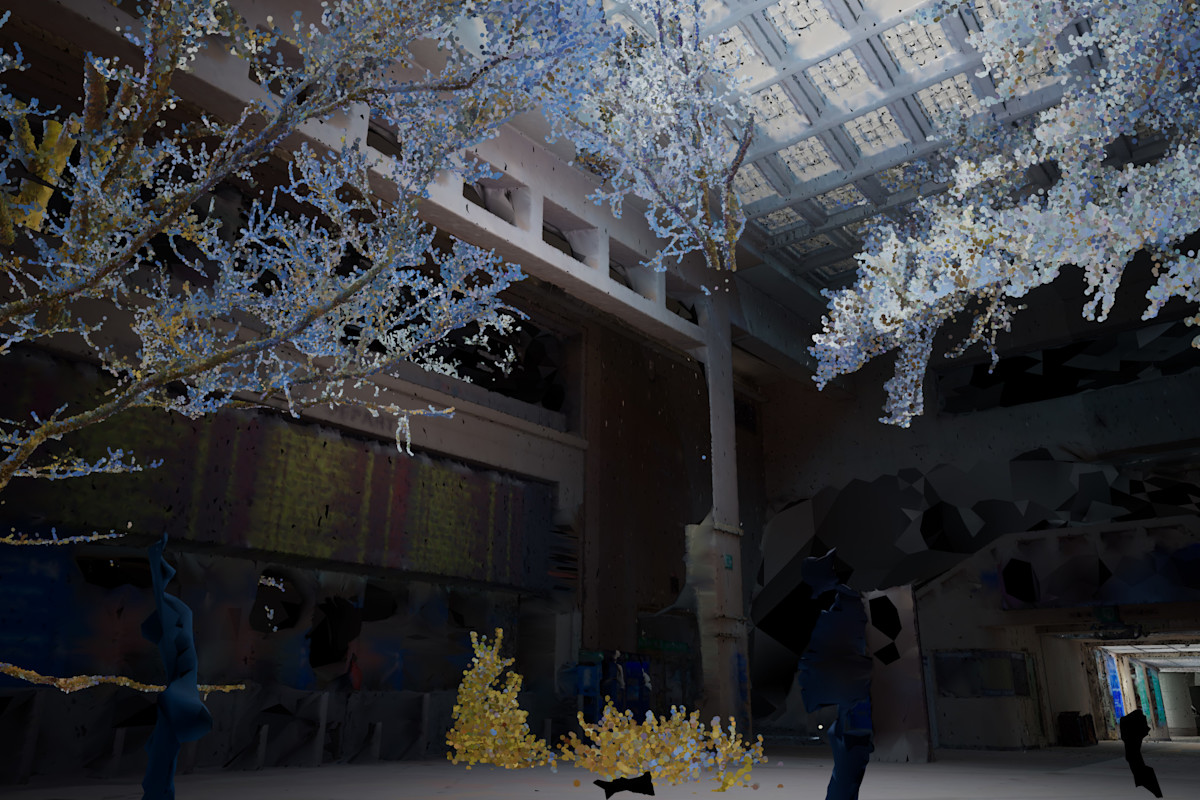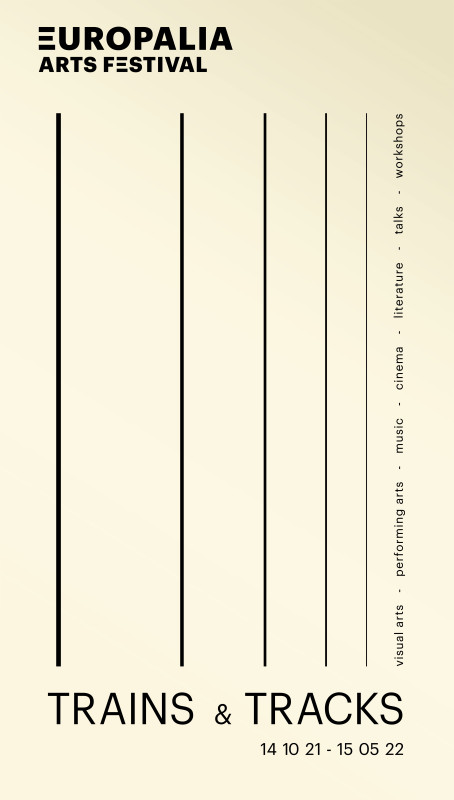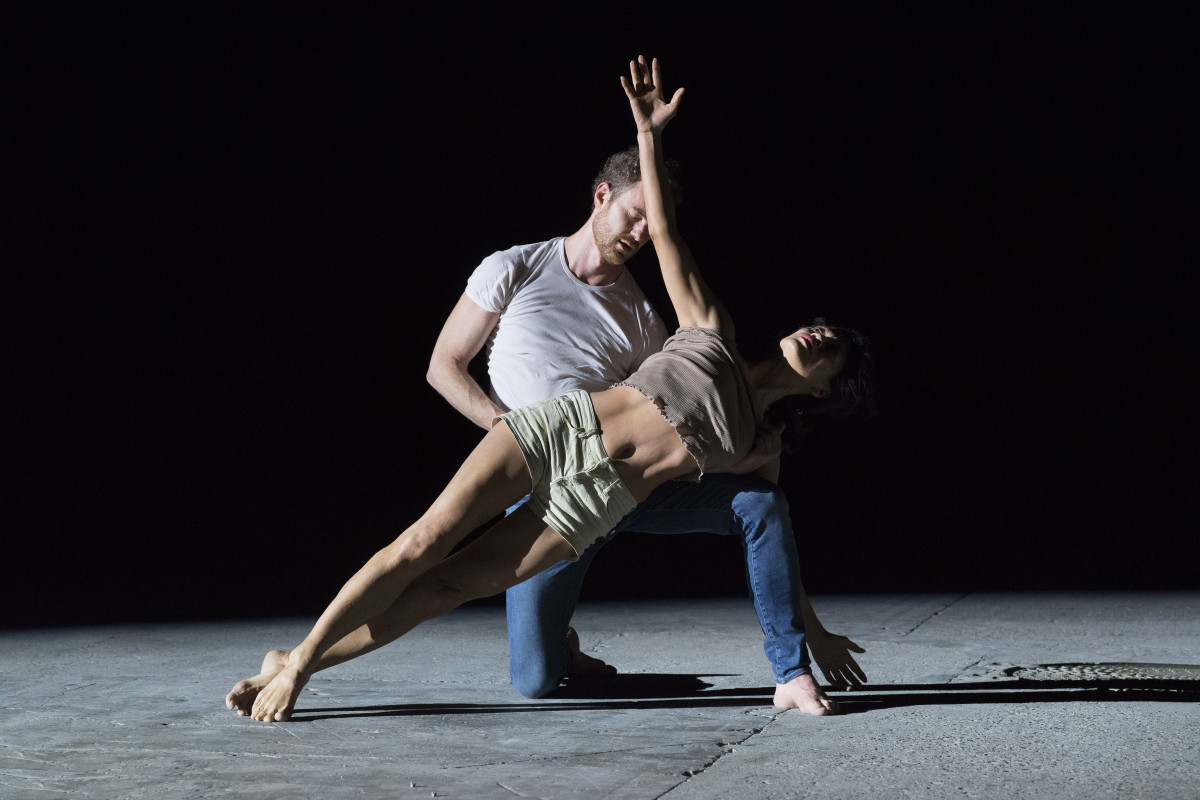In 2021, several railway anniversaries will be celebrated*: a good reason for EUROPALIA to devote a festival to an invention that once shook the world and looks set to play a starring role again.
Starting this autumn, from 14 October until 15 May 2022, EUROPALIA TRAINS & TRACKS presents a programme that approaches the train both from a contemporary artistic perspective and from a perspective that revolves around four themes.
Impact on society
The development of the railways catapulted Western society into modernity. The train represented an enormous advance on the level of travel, transport, architecture and urbanism… It transformed a way of life and consequently influenced the arts scene in an unprecedented way. Its speed both fascinated and frightened. The railways stood for hope and progress but also for despair and suffering in their construction in colonial territories and deployment in two world wars.
The impact on society is the starting point for the festival and its new creations. Not only from an historical perspective, but also and especially from the (possible) impact of the railways in the future. The opening exhibition, Tracks to Modernity, at the Royal Museums of Fine Arts in Brussels, looks at the changes the train brought about in art, from the Impressionists to the Futurists and Surrealists. Expect to see big names such as Monet, Caillebotte, Spilliaert and Boccioni but also contemporary works by Fiona Tan and others.
Seven artworks by as many artists will be installed along the Ostend-Eupen line, the longest and busiest train route through Belgium and its different (language) communities. Selected by curator Caroline Dumalin, these works by Che Go Eun, Inas Halabi, Flaka Haliti, Chloé Malcotti, Sophie Nys, Marina Pinsky and Laure Prouvost, will be embedded in local contexts, sometimes hidden or forgotten, and interwoven in (semi) public space alongside railway tracks and inside stations.
Train World in Schaerbeek will play on the nostalgia surrounding trains and explore the highly evocative world of the Orient Express.
At the Centre de la Gravure et de l’Image Imprimée in La Louvière, train posters will trace the relationship between the railways and society, with new work by the artist Nayel Zeaiter.
Sustainability
Although at its inception the train symbolised the acceleration of society and industrialization, today it is more associated with a need to slow down, to find a sustainable way of living and travelling, something that is gaining the night train more and more fans. The European Commission has declared 2021 as European Year of Rail and at various locations across Europe, EUROPALIA is organising workshops around the train of the future, debates on the role of the train in the Green Deal, and creative workshops on sustainable travel for children and young people.
Time and motion
The concepts of time and motion are closely associated with the train. The confusion between local times in different destinations caused many train accidents in the 19th century and eventually led to the standardization of time – the official clock – that we still follow today.
Not only is the movement of the train itself fascinating, but also that of the traveller in that train or in a station, the design of which does not always take diverse identities and perspectives into account. And whereas in the early days of rail travel, manners and etiquette guided the way we moved around these spaces, today we are primarily guided by a virus, COVID-19.
With Jean, artist Rita Hoofwijk is working on a project for the train between Brussels and Amsterdam, in which she will try to liberate the traveller from the ever-present clock and bring them closer to the journey itself, the movement, the passing landscape, from linear time to cyclical time. She departs from the manifesto on movement by the artist Jean Tinguely and will also develop a second performance around one of his kinetic works that will be coming to BOZAR in Brussels for the exhibition Rinus Van de Velde: Inner Travels.
The train sets the story of this exhibition in motion and carries you into the universe of Van de Velde, culminating in his new film being premiered at the festival. Van de Velde creates a unique world, a microcosm like a train table, inspired by imaginary travels and encounters with artists such as Bonnard, Van Gogh, Beverly Buchanan and Fischli & Weiss.
Meetings and farewells
Meetings – and farewells – are inherent to trains and stations, both central locations for TRAINS & TRACKS. Choreographer and dancer Boris Charmatz’s overwhelming durational performance, La Ronde, starts out from the ‘duet’ and for six hours, has dancers, musicians, actors and singers meeting as couples. Charmatz brings powerful and intense movement, dialogue and music to Brussels-North Station (in collaboration with Charleroi Danse) and provides the impetus for a series of participative performances, installations and concerts in stations and trains across Belgium.
Together with the Ictus Ensemble, the very first train ride on the continent, between Brussels and Mechelen in 1835, will be re-enacted, with surprising musical interventions on the train and in the Central Workshop of the SNCB in Mechelen composed by, among others, Myriam Pruvot, Fritz Hauser and Ann Eysermans, who has written a fugue for locomotives.
Mohamed Toukabri decided to become a dancer and choreographer after seeing a breakdancer in the station of Tunis. For TRAINS & TRACKS, Toukabri is creating a new performance around breakdance, hip-hop and their connection with public space in stations. A performance that will take place in different venues (Concertgebouw Bruges, Théâtre de Liège…), preceded by workshops in stations.
For Lost & Found (a coproduction with Cascophil and Muziektheater Transparant), a composer and librettist will spend one week in a glass box in the stations of Antwerp, Brussels Central and London St Pancras. Each day, they will compose a short opera about current affairs based on input from passengers and performed during rush hour.
Six authors, including Lize Spit, Rob Van Essen and Thomas Gunzig, will write their own versions of the clichéd railway station novel and recite their texts in the stations of Antwerp and Liège (in cooperation with Behoud De Begeerte). Writer Carl Norac will have a residency aboard a train.
EUROPALIA has thus been working on more than 50 artistic projects with dozens of enthusiastic partners and artists over the past difficult months, taking into account possible COVID-19 measures, but in the hope that by autumn, artists and the public will once again be able to meet each other.
EUROPALIA TRAINS & TRACKS, from 14 October 2021 until 15 May 2022. The festival is currently being developed; the full programme will be released this spring. In the meantime, subscribe to our newsletter to stay up to date.
On the occasion of this edition, EUROPALIA is working closely with SNCB, the Belgian railway company, and its museum, Train World.
*175 years ago, Brussels and Paris were the first European capitals to be connected by rail; 40 years TGV; 25 years Thalys…






